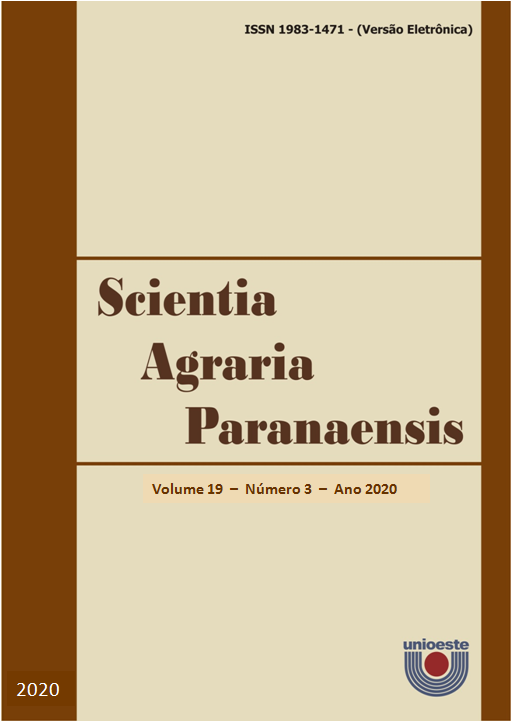Chemical composition and microbiological quality of bee pollen
DOI:
https://doi.org/10.18188/sap.v18i3.23991Resumo
Besides honey and propolis, bee products already well consolidated, pollen also has relevant economic, nutritional and functional value. As the quality of the final product is directly related to the region where it is collected and processed, this work has evaluated the nutritional and microbiological quality of two dehydrated bee pollens from São Paulo state and the other produced by beekeepers from northern of Mato Grosso state, but with no inspection. Physical-chemical and microbiological quality, phenolic composition and mineral profile analysis were performed. It was observed that both pollens presented satisfactory quality regarding protein contents (24.8 ± 2.4 g 100 g-1), total sugars (36.2 ± 1.1 g 100 g-1), lipids (4.0 ± 0.3 g 100 g-1), ashes (2.6 ± 0.05 g 100 g-1), free acidity (238.7 ± 4.5 mEq Kg-1) and pH (4.8 ± 0.03), however regarding the humidity levels (6.6 ± 2.2 g 100 g-1) both samples were not in accordance with recommended by law (<4 g 100 g-1). The bioactive profile has shown a significant amount of phenolic compounds (37.3 ± 1.1 mg GAE g-1) and flavonoids (41.8 ± 2.5 mg QE g-1), besides potential antioxidants around, approximately, 50 and 80%. Microbiological analyzes have revealed low bacterial contamination (≤ 3.6 MPN g-1), molds and yeasts (variation between 1.2x103 and 4x101 CFU g-1), according to values stipulated by the current legislation, being observed the absence of Salmonella sp. and Escherichia coli. The bee pollens investigated have nutritional quality and safety for consumption. However, pollen from São Paulo state showed greater antioxidant potential, probably due to its higher content of phenolics when compared with pollen from Mato Grosso state.
Downloads
Publicado
Como Citar
Edição
Seção
Licença
Aviso de Direito Autoral Creative Commons
Política para Periódicos de Acesso Livre
Autores que publicam nesta revista concordam com os seguintes termos:
1. Autores mantém os direitos autorais e concedem à revista o direito de primeira publicação, com o trabalho simultaneamente licenciado sob a Licença Creative Commons Attribution que permite o compartilhamento do trabalho com reconhecimento da autoria e publicação inicial nesta revista.2. Autores têm autorização para assumir contratos adicionais separadamente, para distribuição não-exclusiva da versão do trabalho publicada nesta revista (ex.: publicar em repositório institucional ou como capítulo de livro), com reconhecimento de autoria e publicação inicial nesta revista.
3. Autores têm permissão e são estimulados a publicar e distribuir seu trabalho online (ex.: em repositórios institucionais ou na sua página pessoal) a qualquer ponto antes ou durante o processo editorial, já que isso pode gerar alterações produtivas, bem como aumentar o impacto e a citação do trabalho publicado (Veja O Efeito do Acesso Livre).
Licença Creative Commons
Esta obra está licenciada com uma Licença Creative Commons Atribuição-NãoComercial-CompartilhaIgual 4.0 Internacional, o que permite compartilhar, copiar, distribuir, exibir, reproduzir, a totalidade ou partes desde que não tenha objetivo comercial e sejam citados os autores e a fonte.


